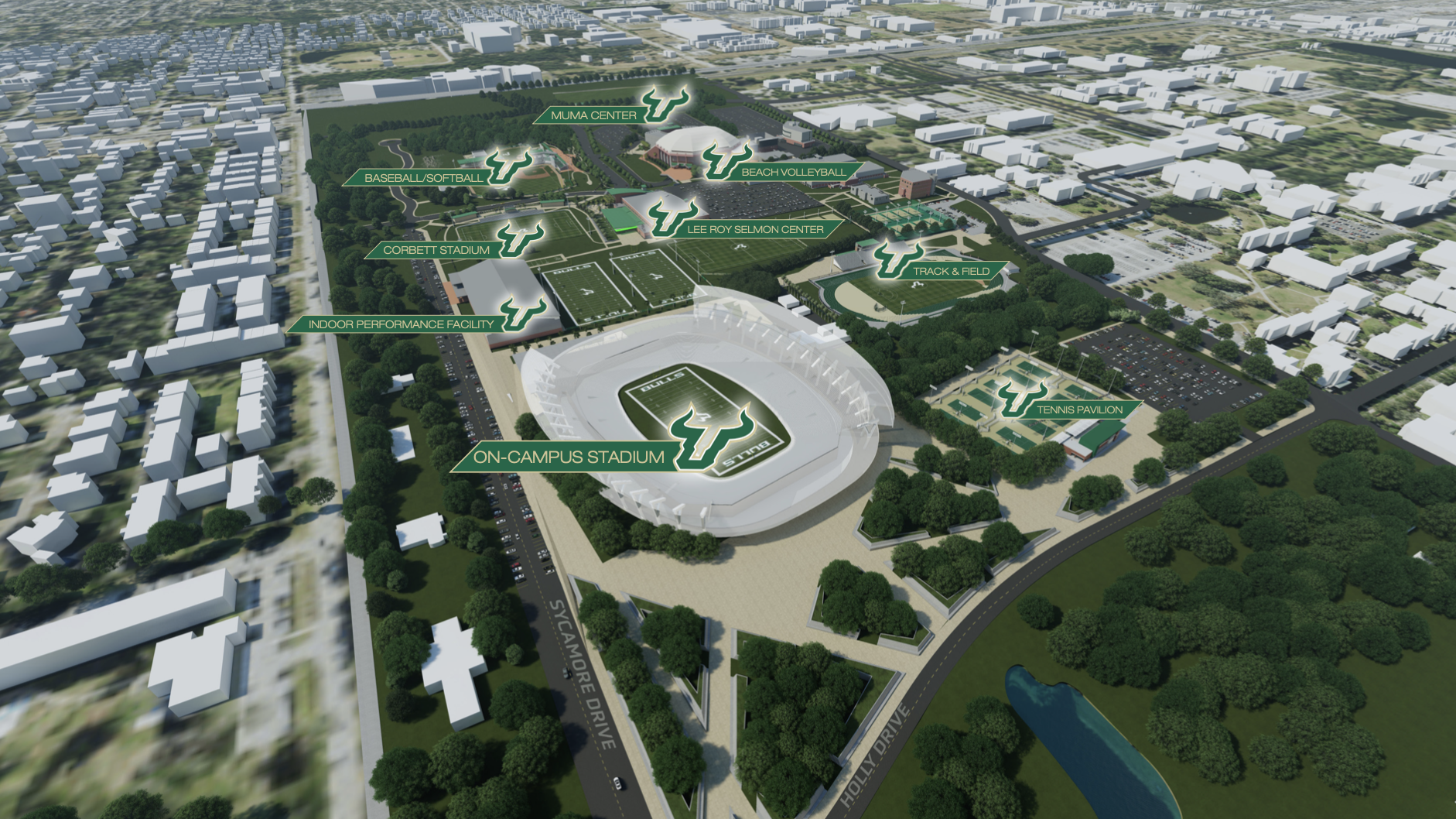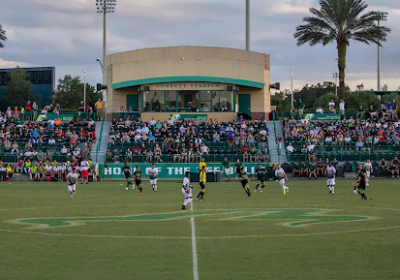Stadium planning committee in final negotiations with Barton Malow and Populous

Construction firms Barton Malow and Populous were announced Tuesday as the firms intended to build the on-campus stadium, bringing USF closer to the design phase.
Negotiations are expected to be finalized in the next few weeks, Vice President of Athletics Michael Kelly said. But he and USF Foundation CEO Jay Stroman intend to award them the project.
“We know this team,” Kelly said. “We know this team can do it.”
Kelly and Stroman will go before the board in a few weeks again to get approval of the contracts and design budget. Once they get the green light, the next phase of planning will begin — design.
Nearly a year ago, Board of Trustees (BOT) Chairman Will Weatherford first announced his vision to build an on-campus football stadium.
Since then, a location and timeline have been picked. USF Athletics’ goal is to build a stadium north of the new indoor-practice facility on Sycamore Fields. If everything works out as planned, it should be ready for the fall 2026 season opener.
“We’re moving forward quickly,” President Rhea Law said.
Together, the companies have collaborated on 43 projects in the past 33 years, including Penn State’s Beaver stadium. This reassured Weatherford.
“I’m really encouraged based on the intent to award that they worked on 43 projects together,” he said. “These are complex construction projects, and so knowing that they work together as a team with each other is really critical.”
In the first week of August, Kelly and Stroman brought the firms in to interview after reviewing proposals for about a month.
Barton Malow is a longtime Tampa-based construction firm that was in charge of the build of other college stadiums such as at Notre Dame and the University of Michigan.
Populous is a global architectural design firm that has been in Tampa for 23 years. Recent projects include stadiums at Baylor, Colorado State and the University of Minnesota.
The firms are also conscious of the campus’ natural environment, according to Kelly, and will take it into account when preparing a design.
They also showed “willingness” to include students in the design planning process to learn and contribute, according to Kelly. This is especially because the team will be looking for ways to make the stadium useful year round.
“One really important [thing] is to go to our students,” he said. “Start in the beginning of the process and [have them] learn and be part of the process. Not only with their input, but actually serving and learning.”
Kelly said the whole design planning process could take 12-14 months to complete, and when that is finished is when there will be final renderings of what the stadium will look like.
A large question continues to linger, and that is the final cost of the project. However, it depends on the design, according to Kelly, so that figure will likely remain unknown for at least another year. A plan for financing it would come after, he said.
The final price could be between $250 million and $400 million, Kelly said in a March BOT meeting. Kelly said there will likely be a focus on philanthropy to fund the project, and stadium revenues to pay off the debt.
So far, $10 million have been committed to the build from Frank and Carol Morsani as well as Jeff and Penny Vinik who each put forward $5 million.








